-
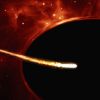 +18 +2
+18 +2Fastest known star speeds around Milky Way's black hole at 18 million mph
Astrophysicists have discovered the fastest known star which is racing around the black hole at the center of the Milky Way. The star, designated S4716, completes an orbit around the supermassive black hole Sagittarius A* (Sgr A*) in just around four years.
-
 +17 +1
+17 +1Scientists discover how first quasars in universe formed
The mystery of how the first quasars in the universe formed—something that has baffled scientists for nearly 20 years—has now been solved by a team of astrophysicists whose findings are published in Nature.
-
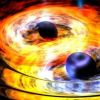 +1 +1
+1 +1The Milky Way may have two supermassive black holes
Measurements of stars orbiting our galaxy's core suggest our 4-million-solar-mass black hole, Sagittarius A*, may have another supermassive companion lurking nearby.
-
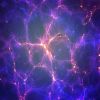 +4 +1
+4 +1A mysterious intergalactic force is pushing against the Milky Way
It sounds like the premise of a bad sci-fi movie: There's some mysterious entity, beyond the boundaries of our galaxy, that is pushing against us with incredible force. We don't know exactly what it is, and we don't know how long it's been there. But we do know its name: the dipole repeller.
-
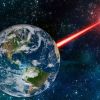 +12 +2
+12 +2Research breakthrough means warp speed ‘Unruh effect’ can finally be tested
A major hurdle for work at the forefront of fundamental physics is the inability to test cutting-edge theories in a laboratory setting. But a recent discovery opens the door for scientists to see ideas in action that were previously only understood in theory or represented in science fiction and advances our understanding of theory of relativity and quantum mechanics.
-
 +16 +3
+16 +3Space DOES NOT Expand Everywhere
Space is big, and it’s getting bigger. But where does all that new space actually come from? And is it popping into existence all around you right now? Is that why the remote control is always further away than I thought?
-
 +10 +2
+10 +2Search reveals eight new sources of black hole echoes
Scattered across our Milky Way galaxy are tens of millions of black holes—immensely strong gravitational wells of spacetime, from which infalling matter, and even light, can never escape. Black holes are dark by definition, except on the rare occasions when they feed. As a black hole pulls in gas and dust from an orbiting star, it can give off spectacular bursts of X-ray light that bounce and echo off the inspiraling gas, briefly illuminating a black hole's extreme surroundings.
-
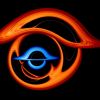 +16 +4
+16 +4Overlooked gravitational wave signals point to 'exotic' black hole scenarios
Revisiting their initial data, LIGO-Virgo Collaboration scientists discover 10 new black-hole mergers. In a new analysis of their gravitational wave data, scientists with the international LIGO-Virgo Collaboration (LVC) have discovered 10 new examples of merging binary black holes.
-
 +12 +1
+12 +1A New Tool for Finding Dark Matter Digs Up Nothing
Even the strongest gravitational waves that pass through the planet, created by the distant collisions of black holes, only stretch and compress each mile of Earth’s surface by one-thousandth the diameter of an atom. It’s hard to conceive of how small these ripples in the fabric of spacetime are, let alone detect them. But in 2016, after physicists spent decades building and fine-tuning an instrument called the Laser Interferometer Gravitational-Wave Observatory (LIGO), they got one.
-
 +17 +3
+17 +3What Can We Learn About the Universe from Just One Galaxy?
Imagine if you could look at a snowflake at the South Pole and determine the size and the climate of all of Antarctica. Or study a randomly selected tree in the Amazon rain forest and, from that one tree—be it rare or common, narrow or wide, young or old—deduce characteristics of the forest as a whole.
-
 +22 +4
+22 +4Physicists Think They've Finally Cracked Stephen Hawking's Famous Black Hole Paradox
At the heart of every black hole sits a problem. As they sizzle away into nothingness over the eons, they take with them a small piece of the Universe. Which, quite frankly, just isn't in the rule book.
-
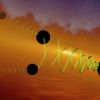 +17 +5
+17 +5Black hole “billiards” may explain strange aspects of 2019 black hole merger
In 2019, the LIGO/VIRGO collaboration picked up a gravitational wave signal from a black hole merger that proved to be one for the record books. Dubbed "GW190521," it was the most massive and most distant yet detected, and it produced the most energetic signal detected thus far, showing up in the data as more of a "bang" than the usual "chirp."
-
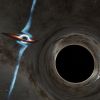 +1 +1
+1 +12 black holes collided billions of years ago. The spectacle is just beginning to reach Earth.
In a galaxy far, far away, two giant black holes appear to be circling each other like fighters in a galactic boxing ring. Gravity is causing this death spiral, which will result in a collision and formation of a single black hole, a massive event that will send ripples through space and time.
-
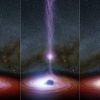 +4 +1
+4 +1NASA Just Saw Something Come Out Of A Black Hole For The First Time Ever
You don't need to be an expert in science to understand that black holes often pull things in rather than spit them out. However, NASA has just discovered something quite weird around the supermassive black hole Markarian 335.
-
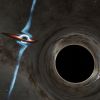 +16 +6
+16 +6Two Supermassive Black Holes on Track to Collide Will Warp Space and Time
One researcher relates the epic discovery of these supermassive voids to "a good detective novel." In about 10,000 years, they'll merge and send ripples across the universe.
-
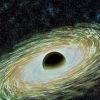 +2 +1
+2 +1Scientists warn that supermassive black holes will collide and alter space and time.
According to a recent study, two huge black holes will combine in 10,000 years, causing tremors throughout the cosmos. Two massive black holes, nearly 9 billion light-years out in deep space, are rotating around each other every two years, according to research led by a team of CalTech astronomers.
-
 +3 +1
+3 +1James Webb Space Telescope will study Milky Way's flaring supermassive black hole
The James Webb Space Telescope will study the weirdly flickering black hole at the heart of our galaxy, the Milky Way, which has proved elusive for existing telescopes to explore. Webb will join the efforts of numerous telescopes to understand the nature of the supermassive black hole called Sagittarius A*, whose tendency to flare up on an hourly basis makes it difficult to image.
-
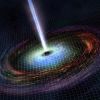 +13 +2
+13 +2Twin Brown Dwarfs Discovered, Orbiting one Another at Three Times the Distance From the Sun to Pluto
Gravity is a funny force. The gravity of every given object technically impacts every other given object, though, in practice, large distance and small masses make those forces negligible for such interactions. But in some cases, especially when large groups are floating in empty space, gravity can still hold sway over considerable distances. Such is the case with a new pair of brown dwarfs found by astronomers at the Keck Observatory.
-
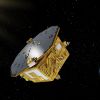 +3 +1
+3 +1Future Gravitational Wave Detector in Space Could Solve Mysteries of the Universe
New research has shown that future gravitational wave detections from space will be capable of finding new fundamental fields and potentially shed new light on unexplained aspects of the Universe.
-
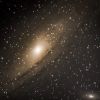 +19 +4
+19 +4Astrophysicists May Have Found a Rare Species of Black Hole in the Andromeda Galaxy
A team of astrophysicists believe that a glob of stars in our next-door galaxy is hiding an intermediate-mass black hole, a type predicted to exist but that has never been observed for certain. The globular cluster in question is called B023-G078, and it’s situated on the outskirts of the Andromeda Galaxy, about 2.5 million light-years away. The researchers believe the cluster, which contains the mass of 6.2 million Suns, is actually a stripped nucleus: the remains of several small galaxies that glommed together.
Submit a link
Start a discussion




















